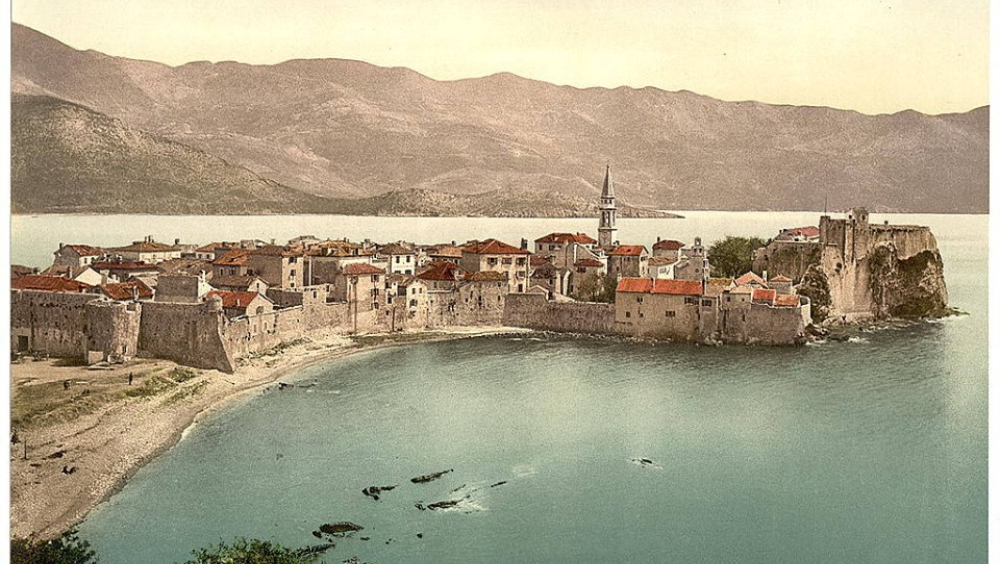Legend of the Rise and the History of Budva
Budva, as one of the oldest cities on the Adriatic, was founded more than 2,500 years ago. Along with its hinterland, Budva is rich in cultural heritage, especially archaeological (land and underwater), architectural, and intangible cultural heritage as well. Many ancient writers had written about Budva: Sophocles, Euripides, Pseudo-Scylax, as well as Philo of Byblos, who told the legend regarding the origin of Budva - a story about Cadmus and Harmony. After the rule of the Encheleans, and during the Hellenistic and Roman period, Budva became an important center, as evidenced by the findings from ancient necropolises discovered in 1938, 1956-57, and in 1981-82. The Statute of Budva was created in the Middle Ages, and the City Walls of Budva, its organization and fortification of the city, can testify about the rule of the Venetian Republic over Budva (1442-1797). After the Venetian Republic, Budva was ruled by the Austro-Hungarian Empire. France and Russia ruled for a very short period of time, and after them, for almost a century, Budva was ruled by the Austro-Hungarian Empire again until the liberation in 1918.
The Legend About the Founding of Budva: "Cadmus, mythical character and the founder of Budva, was the son of the Phoenician king Agenor and the queen Telefase, and the brother of Phoenix, Cilix and Europa. When Zeus abducted Europe, Agenor sent his sons to seek out their sister and ordered them not to return to their homeland without her. To find out where his sister was, Cadmus headed to Delphi, where the Pythia told him to give up his quest for his sister, and to follow a cow with a white sign in the shape of a full moon that would take him to a place where he would built a city. Cadmus encountered this cow traveling through Phocis. He bought the cow and followed it to the place where the cow stopped and fell from the tiredness. Cadmus decided to place a statue of the goddess Athena at that place and he sacrificed the cow to Athena. Sacrifice couldn’t be done without the water, so Cadmus sent some of his companions to a nearby spring. The spring was guarded by a fierce dragon, the son of Ares, who became angry and killed Cadmus’companions. Trying to save his companions, Cadmus killed the dragon and, as advised by the goddess Athena, sowed half of the dragon's teeth in the ground. The goddess gave the other half of the dragon's teeth to the king Aeetes of Colchis. For to the killing of the dragon, Cadmus and his wife Harmony, the daughter of the god Ares and Aphrodite, were, in their old age, expelled from the city of Thebes and went to live with the Encheleans, leaving the throne to his grandson Pentheus. It was said that the town of Butoe (Budva) was named after the heard of oxen that pulled the car with Cadmus and Harmony into the land of Illyrians. The Encheleans were said that they would defeat their neighbors Illyrians if they chose Cadmus as the leader. When they accepted the advice, Cadmus won the victory over the Illyrians and conquered their land. Harmony gave birth to a son for Illyrians. Some say that the spouses turned into snakes in the Illyrian country as a punishment for the murder of the son of Ares. " A Short History of Budva With a Focus on the City Walls: Budva is one of the oldest urban centers on the Adriatic more than 2,500 years old. There are indications that the city was founded in the 7th or 6th centuries BC, as it was confirmed by the cyclone pillars - the gate of the ancient Budva. The influence of Greek culture in the city can be chronologically followed from the 4th to the middle of the 2nd century BC, when the Roman supremacy became stronger on the eastern coast of the Adriatic. The archaeological findings of the necropolis in Budva testify to the rich Hellenistic culture, and the existence of the market or the emporium. Today's appearance of the City Walls of the Old Town is the result of a turbulent historical events occurred in Budva. In addition to the wars, the City Walls survived the damages during the fires and earthquake in 1667 and 1979. The City Walls were renovated during different periods of time. It is assumed that the City Walls were somewhat different in the early-Byzantine period between the 6th and 9th century. However, their present appearance is to a great extent the result of builder's interventions of the Venetian Republic in the period from the 15th to the 18th centuries, confirmed by the coat of arms of that state. Also, during the rule of the Austro-Hungarian Monarchy, the City Walls were renovated, as well as the Citadel which had a special significance. The Citadel was treated as a military base, and it had ammunition depots, wells, as well as housing units. The City Walls have three towers with loopholes and machicolation used for the defense- the holes were used to pour hot oil or water on the enemies or invaders. The Repeno Tower is located eastward, and the main Gradenigo Tower is located to the north. The third tower, towards the southwest, is called the Brijeg od Budve Tower.
The legend of the founding and also the history of Budva all testify to the connection of this Mediterranean city on the Adriatic with the European and world cultures. Writers from Ancient Greece, who represent the cradle and center of civilization and culture of the ancient period, had written about Budva. Budva was in the medieval period under the jurisdiction of the Venetian Republic for centuries, and the cultural influences of this period are still visible in the tangible and intangible culture of the city.
